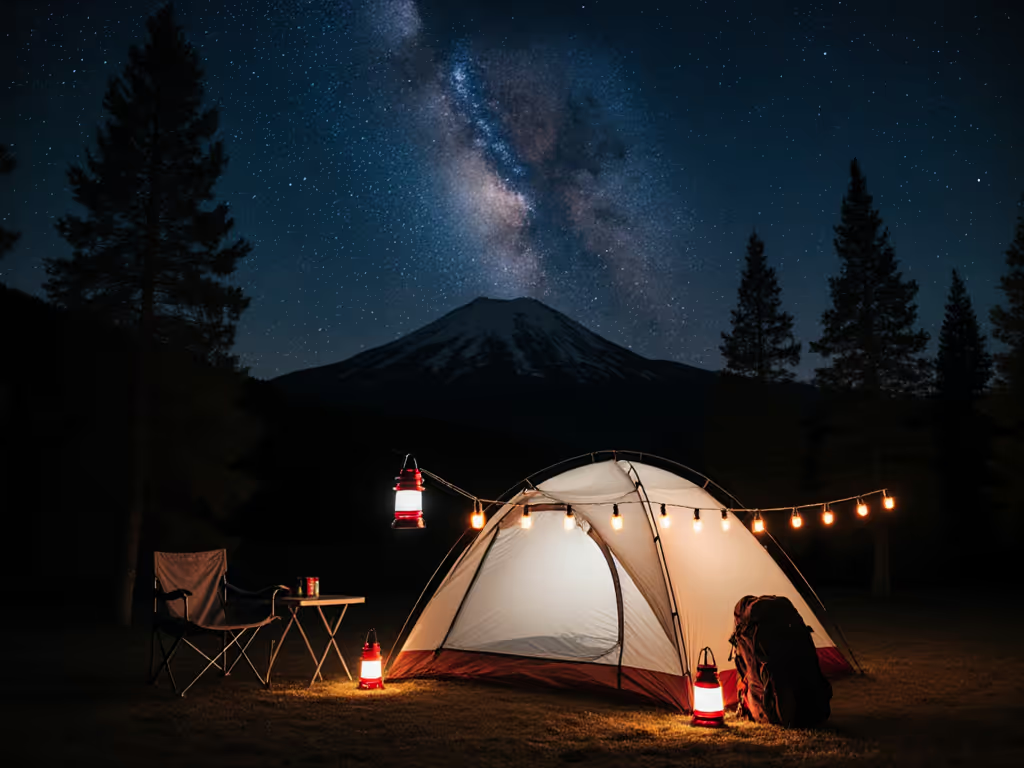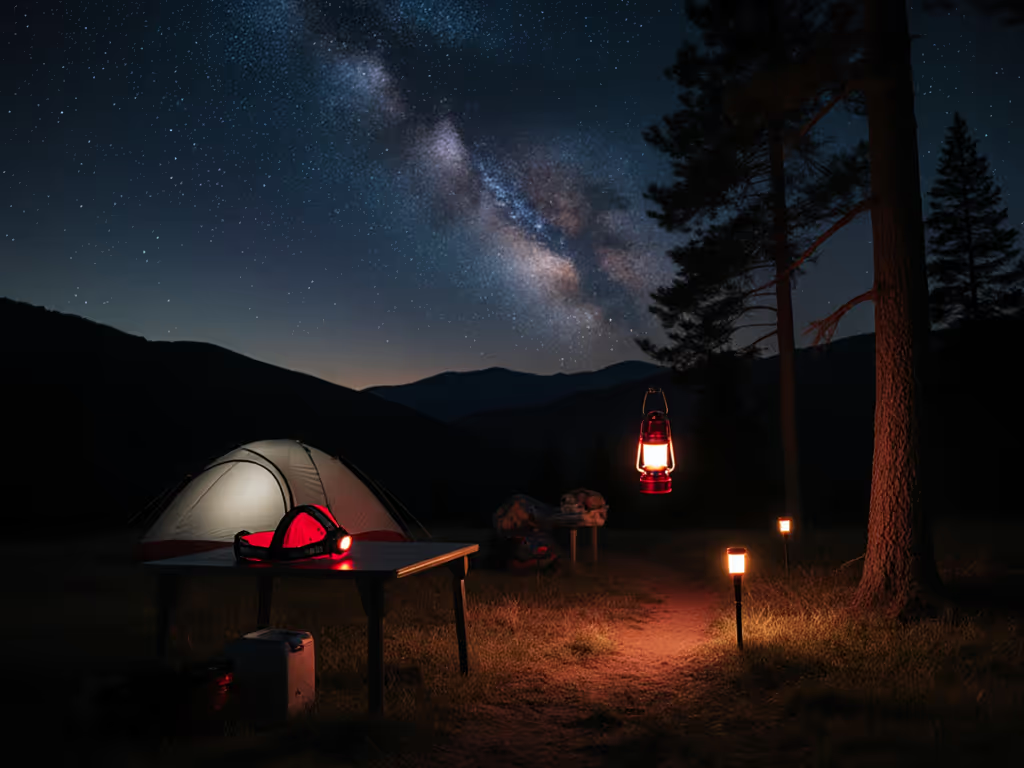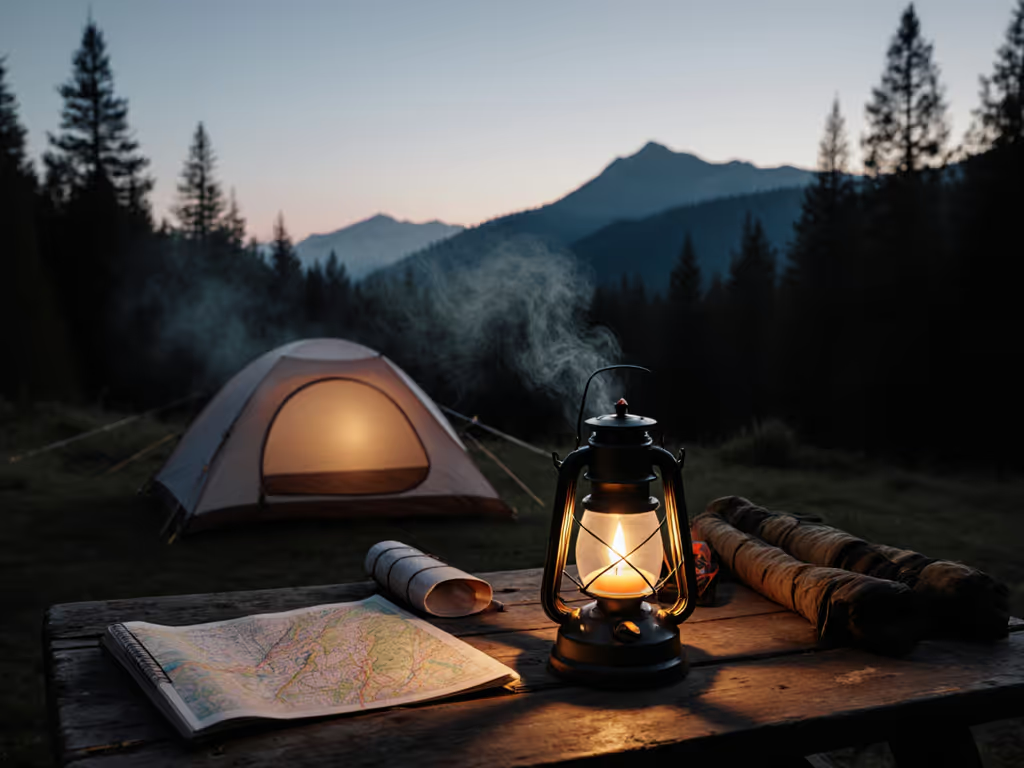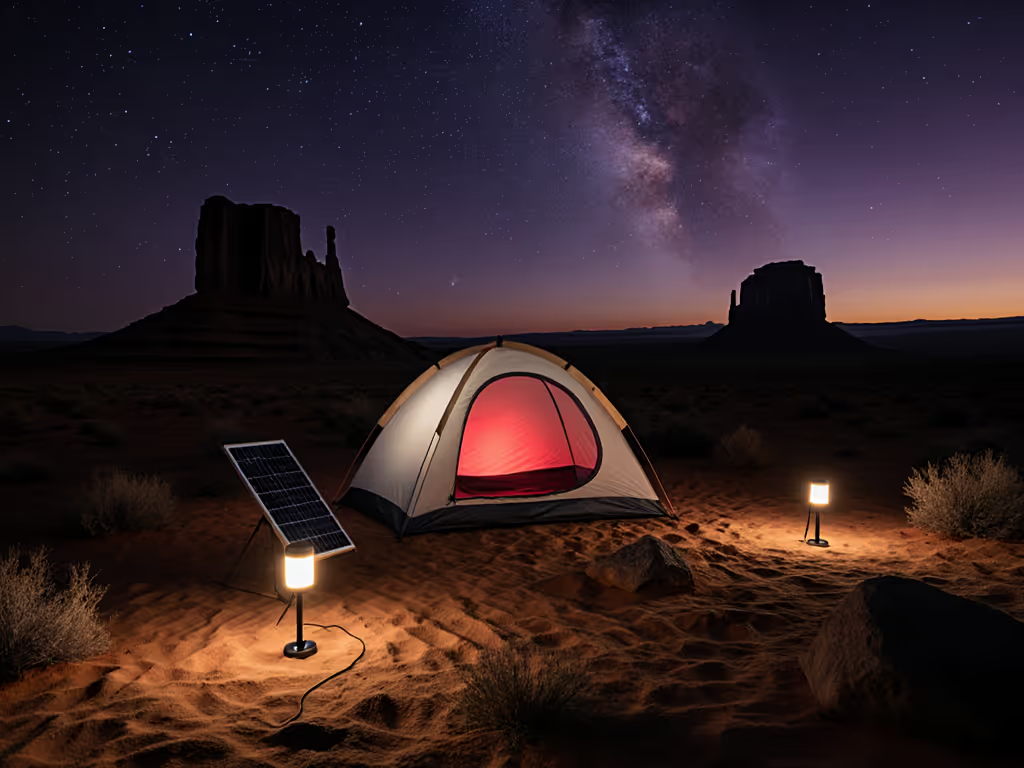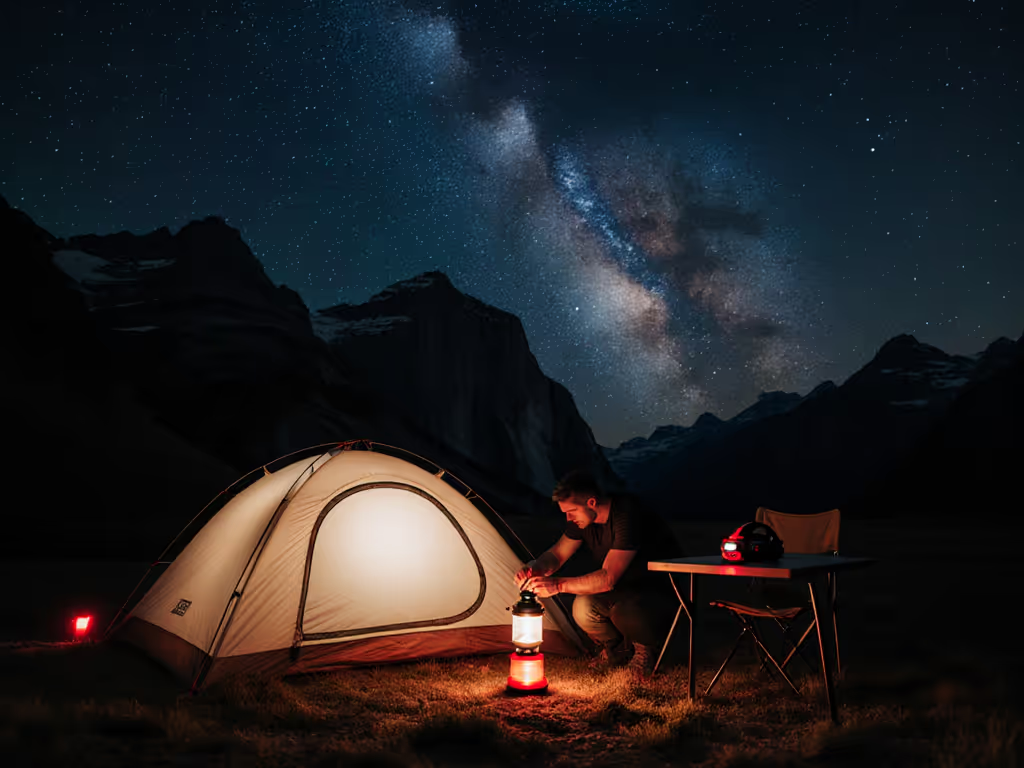
11/11/2025 Campout: Dark-Sky Lighting Checklist, Battery-Saving Gear & Setup Tips
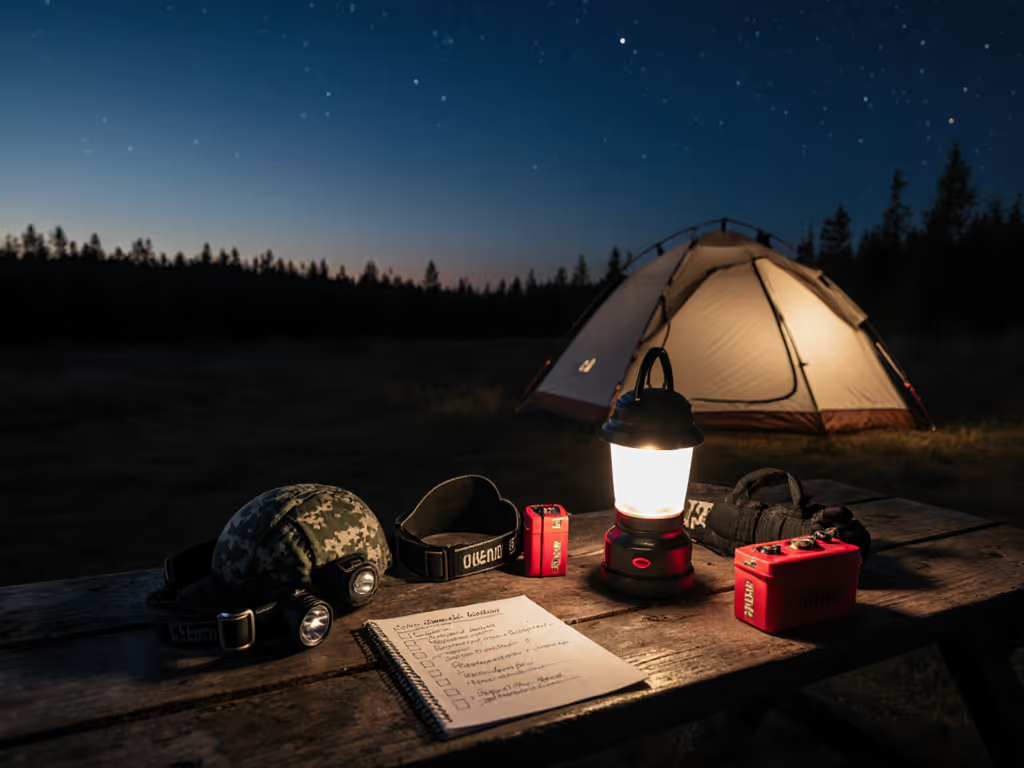
11/11/2025 Campout: Dark-Sky Lighting Checklist, Battery-Saving Gear & Setup Tips
11/11/2025 Campout: Dark-Sky Lighting Checklist, Battery-Saving Gear & Setup Tips
As the 11/11/2025 campout approaches, you want clear trails, content neighbors, and power that lasts. This blog post for 2025-11-11 is your field guide to dark-sky lighting that preserves night vision without sacrificing safety. Traditional camping lights can flood a site with harsh, blue-heavy beams that drain batteries, disrupt wildlife, and wash out the stars. With Camp Crew Lighting’s guidance, you will dial in warm, efficient gear and a smart setup that keeps your group coordinated while keeping the sky naturally dark.
In the paragraphs ahead, we will unpack a practical checklist, explain battery-saving equipment, compare popular light types, and share pro layouts that reduce glare. Along the way, we will connect each choice to real outcomes you can feel: calmer eyes, friendlier camps, and longer runtimes. Wherever you are camping, these strategies help you follow Leave No Trace principles, including leaving as little light trace as possible. Ready to replace trial-and-error with a plan that works on the first night out.
Why This blog post for 2025-11-11 Matters for Your Campout
Dark-sky practices are not just “nice to have”; they are evidence-based and comfort-forward. Studies referenced by park services suggest that it can take 20 to 30 minutes for full night vision to return after exposure to bright white light, which is why a poorly aimed lantern or headlamp can reset everyone’s eyes at once. Global light pollution estimates indicate that the majority of people live under skyglow, and campsites are not immune to that trend. By choosing warm color temperatures and shielding your beams, you actively protect the view of the Milky Way while improving safety on the ground. For the bigger picture, see our dark-sky-friendly lighting primer.
Camp Crew Lighting focuses on these real-world tradeoffs because typical gear can cause glare, wasted power, and frustrated neighbors. A warm color temperature in the range of 2200 to 3000 Kelvin (K) reduces blue light scatter, which means less haze and fewer squinting faces. Downward-facing fixtures with diffusers create pools of gentle light that let your pupils remain open, so paths remain navigable while the sky stays dramatic. The result is a campsite that looks and feels intentional, like a cozy village instead of a parking lot.
The battery angle matters just as much, especially on shoulder-season trips when nights are longer. Dimming lights to 30 percent output often yields two to three times the runtime, because many drivers are more efficient at lower power. Choosing a headlamp or lantern with an efficient driver and warm light-emitting diode (LED) (light-emitting diode) chip helps you stretch the same pack of cells across multiple evenings. And when power is tight, every lumen needs a job, not a halo of glare floating into the tree canopy. To choose the most efficient power source for your lights, compare options in our rechargeable vs disposable batteries guide.
Dark-Sky Lighting Checklist: What to Pack and Why
Before you load the car, curate a lighting kit that is purpose-built for dark skies and long runtimes. You are looking for warm output, precise control, and optics that point light down and in, not up and out. A good rule is to light tasks, not the whole forest, so favor diffused glows over bare, piercing beams. Below are the essentials Camp Crew Lighting recommends, paired with the benefits that make each piece worth its weight.
- Headlamp with red mode and smooth low levels for hands-free tasks and trail checks.
- Compact, warm lantern with diffuser and a proper low setting for tent or table use.
- Low-lumen string lights in amber for shared areas, clipped under awnings to avoid skyglow.
- Path markers using reflective tape and micro lights for wayfinding without glare.
- Rechargeable cells and a power bank with USB (Universal Serial Bus) PD (Power Delivery) for top-ups.
- Simple dimmers or inline switches for fine control on string lights.
- Light shields or shades to prevent spill into neighboring sites.
Dark-Sky Pack List at a Glance
| Item | Best For | Key Specs | Dark-Sky Benefit | Camp Crew Lighting Note |
|---|---|---|---|---|
| Headlamp with red mode | Hands-free tasks, midnight checks | 200 to 400 lumens, 2200 to 3000 Kelvin (K), high CRI (Color Rendering Index) 80+ | Red preserves night vision; warm white reduces blue scatter | Look for a broad flood pattern and a true low under 5 lumens |
| Warm diffused lantern | Cooking, games, group tables | 100 to 300 lumens, diffuser, stable low, IP (Ingress Protection) 65+ | Soft, downward pool of light avoids glare | Choose stable output regulation for even brightness as batteries drain |
| Amber string lights | Awnings, canopies, group zones | 5 to 20 lumens per segment, 1800 to 2200 Kelvin (K), inline dimmer or PWM (Pulse Width Modulation) | Gentle orientation light without skyglow | Clip under edges, not along the top, to keep light aimed down |
| Path markers | Guyline and step visibility | Reflective tape plus micro lights under 5 lumens | Safety without flooding the camp | Reflective material does the heavy lifting; keep lights minimal |
| Power bank | Recharging lights and phones | 10,000 to 20,000 milliampere-hour (mAh), USB (Universal Serial Bus) PD (Power Delivery) | Consolidates charging with efficient fast top-ups | Top off during the day to avoid deep discharge cycles at night |
| Rechargeable cells | Headlamps and lanterns | AA (Double A) or 18650 Li-ion (lithium-ion) with quality charger | Stable output and lower waste than disposables | Carry a spare set in a labeled pouch for quick swaps in the dark |
If you need a simple rule-of-thumb, keep personal lights under eye level, use red or very warm light for movement, and reserve higher levels for actual hazards. Then, dim as soon as a task is done, because long nights reward restraint. Camp Crew Lighting’s curated recommendations by activity and budget help you translate these principles into specific models and accessories. That way, your pack is lighter, and your plan is stronger.
Battery-Saving Gear: Power Banks, Cells, and Smart Controls
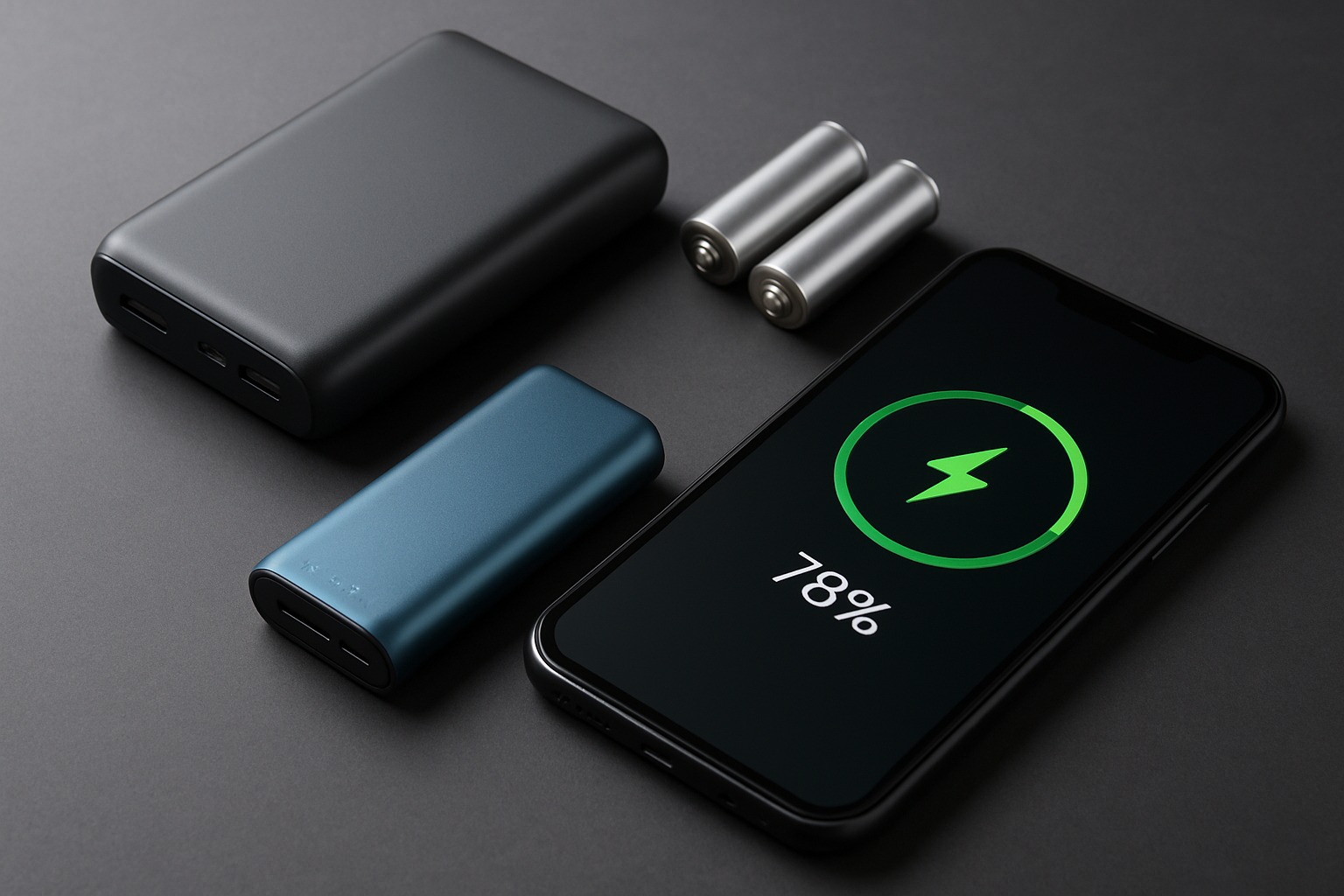
Battery life is a system, not a spec sheet, so think about sources, storage, drivers, and control. Modern Li-ion (lithium-ion) lights with efficient constant-current drivers deliver more useful hours per charge than older designs, especially when used on low or medium settings. A high-capacity power bank with USB (Universal Serial Bus) PD (Power Delivery) can add several full lantern charges, and it wastes less energy in conversion compared with legacy chargers. If you add a compact 10 to 20 watt (W) panel for daytime top-ups, you can stay off-grid for a long weekend without rationing.
Dimmers and smart switches free you from binary on or off thinking. Many string lights accept inline PWM (Pulse Width Modulation) dimmers that preserve color while cutting output, which can double or triple runtime depending on the set and usage. Red modes on headlamps can run all night at a fraction of the power of low white, and they respect the eyes of the entire group. For replaceable-cell gear, quality AA (Double A) rechargeables and 18650 Li-ion (lithium-ion) cells with measured capacity outperform bargain packs that sag and shut down early.
Battery Savers and Their Impact
| Gear or Practice | Typical Efficiency Gain | Why It Works | Best Use |
|---|---|---|---|
| Inline dimmer for string lights | 2x to 3x longer runtime | PWM (Pulse Width Modulation) reduces power without shifting color | Shared areas where gentle glow is enough |
| Warm mode over cool white | Subjective comfort gain, fewer reactivations | Less glare means fewer bumps to high brightness | Table tasks and tent lighting |
| USB (Universal Serial Bus) PD (Power Delivery) power bank | 10 to 20 percent charging efficiency improvement | Higher-voltage negotiation reduces conversion losses | Recharging lanterns and phones efficiently |
| High-quality rechargeable cells | Stable output and full rated capacity | Lower internal resistance keeps lights regulated | Headlamps and lanterns with replaceable batteries |
| Solar trickle via 10 to 20 watt (W) panel | Offset 1 to 2 headlamp or phone charges per sunny day | Harvests free energy during idle hours | Basecamps and festival sites with daytime access |
Camp Crew Lighting evaluates not just capacities on paper but how combinations perform in the field. For instance, a 10,000 milliampere-hour (mAh) bank may recharge a small lantern twice and a headlamp four times if you keep brightness reasonable. Meanwhile, a lantern with true regulated output will feel consistent and avoid the false sense of security that comes from an early bright burst followed by quick dimming. Put simply, smart control plus matched power sources equals more nights per charge.
Setup Tips: Layouts That Preserve Night Vision and Safety
Great lighting is as much about where you place it as what you buy. Start by mapping your campsite like a tiny town with separate zones for sleeping, cooking, gathering, and walking. Then assign each zone a purpose-built light level and a color, keeping the brightest sources shielded and pointed down. You are aiming for a comfortable gradient of illumination that guides movement without broadcasting your camp to the horizon.
- Place path markers low and close: reflective tape on guylines plus micro lights under 5 lumens, pointed toward the ground to avoid glare.
- Keep the table lantern at chest level or below with a diffuser, and angle shades to block direct view of the emitter from outside the table circle.
- Mount string lights under an awning edge, not along the top, and use amber on the lowest usable setting with an inline switch for quick lights-out.
- Use headlamp red mode for movement and switch to warm low white only for detailed tasks, then return to red immediately to preserve night vision.
- Shield sleeping areas from shared light by hanging a dark cloth or orienting tents so doors face away from the common glow.
Picture this verbal diagram: imagine a soft pool above the stove, a smaller pool at the table, and tiny stepping stones of light along the path, with everything else in gentle darkness. That picture is safer because your eyes stay adjusted and your feet see just enough. It is also kinder to wildlife and to neighbors who came for the same stars you did. Camp Crew Lighting’s how-to guides walk you through similar layouts with common gear so you can repeat success at any site.
Head-to-Head Comparisons: Lanterns, Headlamps, and String Lights
Each light type has strengths and tradeoffs, so choosing the right mix saves both power and patience. Lanterns provide shared, diffused light for tasks and conversation but should be kept modest in output and carefully shaded. Headlamps offer personal control and can run at very low levels all night if you rely on red mode or warm low white. String lights are superb for orientation and ambience when dimmed and aimed down, yet they are not a substitute for a task lamp when fine detail matters.
Which Light for Which Job
| Category | Glare Control | Night-Vision Friendly | Runtime Efficiency | Best Use Cases |
|---|---|---|---|---|
| Warm diffused lantern | High when shaded and diffused | Moderate if kept low and aimed down | Good on low and medium | Cooking, board games, group table |
| Headlamp with red mode | High due to precise beam control | Excellent with red or very warm low | Excellent at low output | Walking, tent tasks, personal chores |
| Amber string lights | High if mounted under edges | Excellent when dimmed | Excellent at minimal output | Wayfinding, ambience under awnings |
Camp Crew Lighting’s head-to-head evaluations examine details you will feel in camp: the lowest true setting without flicker, the quality of warm tones, how shielding affects spill, and whether controls are intuitive in gloves. They also test weather protection because storms happen, and an IP (Ingress Protection) 65 or higher rating resists dust and heavy rain. Finally, they rank not just on brightness but on comfort over hours, since the best light is the one you forget is there. With this context, you pick tools that complement each other instead of competing for the same job.
How Camp Crew Lighting Guides Your Choices

You could buy at random, or you could select a system that works together from the start. Camp Crew Lighting provides comprehensive reviews of camping lighting products, designs dark-sky-friendly lighting systems, and publishes how-to setup and maintenance guides that translate features into outcomes. Their head-to-head comparisons and feature evaluations spotlight true low levels, warm output quality, and driver efficiency instead of just headline lumens. And their curated recommendations by price point, activity, and user need keep you from overspending on brightness you will never use.
- Solves real problems: less glare, extended runtime, and preserved night vision through warm tones and shielded optics.
- Dark-sky-first design: layout plans that point light down, protect wildlife, and keep neighbors comfortable.
- Battery-smart advice: pair power banks, panels, and cells to the lights you own for longer nights between charges.
- Actionable setup: step-by-step guides that turn gear lists into reliable campsite routines.
Traditional camping lights can disrupt night vision, consume excessive battery power, and spread glare. Camp Crew Lighting’s solution is to offer dark-sky-friendly systems and guidance that preserve the night environment, reduce glare, extend battery life, and enhance your overall experience with tailored picks. Whether you camp solo or lead a group site at a festival, their structured reviews and design templates help you create a calm, efficient glow. That way, your 11/11/2025 campout looks beautiful and runs on schedule, night after night.
Frequently Asked Practical Questions
How warm is warm enough for dark-sky comfort at camp. A range of 2200 to 2700 Kelvin (K) looks candle-like and keeps pupils relaxed, while red mode is ideal for moving around and late-night tasks. What brightness should you aim for at the table. Many groups are happiest with 50 to 150 lumens when the lantern is diffused and lower than eye level, which allows conversation without squinting. For a deeper breakdown by task, use our lumens camping guide. What about weather and durability. Look for an IP (Ingress Protection) rating of 65 or higher, rubberized grips, and sealed ports on any power bank with USB (Universal Serial Bus) PD (Power Delivery) to shrug off rain and dust.
How do you keep from over-lighting a group site. Build a hierarchy: micro path markers, a single dim string under the awning, one warm diffused lantern at the table, and headlamps for personal tasks. What is the most common battery mistake. Running everything on high at the start of the evening, which accelerates drain and ruins night vision; instead, start low and only bump up for short bursts. Where should you place lights for stargazing nights. Keep all sources under eye level, avoid white light for at least 20 minutes before looking up, and use red or very warm glows for navigation only.
Can you retrofit existing gear for better dark-sky performance. Yes: add clip-on shades to bare bulbs, install inline PWM (Pulse Width Modulation) dimmers on compatible strings, and swap cool emitters for warm modules where the design allows. Is solar practical in late fall. With a compact 10 to 20 watt (W) panel and clear midday sun, you can offset several headlamp charges or a portion of a lantern top-up, buying you margin for one more night. And if you want a done-for-you plan, Camp Crew Lighting’s guides bundle product picks with illustrated layouts, so your packing list becomes a campsite system.
Budget, Midrange, and Premium: Matching Gear to Your Needs
Not every trip needs the most advanced driver or the largest battery bank, which is why tiered recommendations make sense. Budget kits prioritize warm tone, real low modes, and basic shielding so you avoid the biggest pitfalls without overspending. Midrange builds add efficiency and control such as regulated lanterns, red-forward headlamps, and inline dimmers for strings, unlocking longer runtime and more comfortable ambience. Premium setups integrate high-CRI (Color Rendering Index) emitters and robust IP (Ingress Protection) ratings for all-weather confidence, plus power banks with USB (Universal Serial Bus) PD (Power Delivery) to reduce charge time during busy days.
Tiered Recommendations Overview
| Tier | Core Pieces | Typical Spend | When It Shines |
|---|---|---|---|
| Budget | Warm lantern, red-capable headlamp, basic amber string, reflective markers | Under $100 | Casual weekends, light packs, clear weather |
| Midrange | Regulated lantern, high-CRI (Color Rendering Index) headlamp, dimmable string, 10,000 milliampere-hour (mAh) bank | $150 to $250 | Three-night trips, shared camps, mixed weather |
| Premium | High-CRI (Color Rendering Index) lantern, red-first headlamp, robust dimmer system, 20,000 milliampere-hour (mAh) bank, IP (Ingress Protection) 65+ | $300+ | Festivals, family basecamps, off-grid comfort |
Camp Crew Lighting publishes curated lists in each tier and explains the why behind every pick, from beam shape to switch feel. They test for things that spec sheets miss, like whether a lantern’s low mode is truly low or just a dim high, and whether a headlamp’s red mode is accessible without cycling through white light. Those nuances matter at 2 a.m. when you are trying not to wake a kid or a neighbor. With a tier that matches your trip, you will arrive confident and leave rested.
--
This is the promise: a calm, efficient camp that protects night vision, saves batteries, and lets the stars take center stage. In the next 12 months, more parks and campgrounds will encourage dark-sky practices, and the best campsites will reward visitors who plan their lighting. For your own 11/11/2025 trip, how will you shape the glow so your group feels safe while the sky stays wild, and how will you use this blog post for 2025-11-11 to make it happen.
Elevate Your Blog Post For 2025-11-11 Campout with Camp Crew Lighting
Explore Comprehensive reviews of camping lighting products that preserve dark skies, reduce glare, and extend battery life for Campers, outdoor enthusiasts, festival-goers, and environmentally conscious camping setups.

